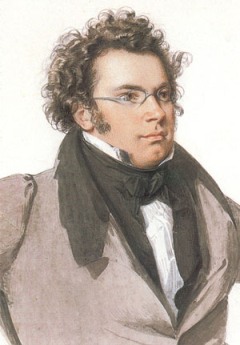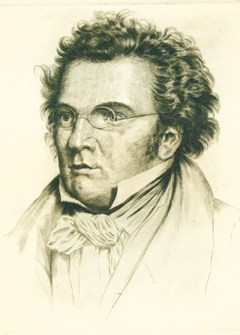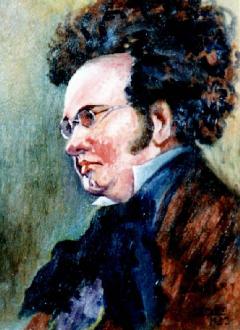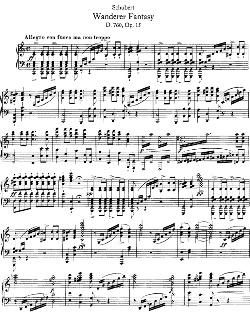Schubert - Wanderer Fantasy
Schubert - Wanderer Fantasy
Set in Vienna in 1828, "A Wanderer Fantasy" focuses on the last months of Schubert's tragically short life. The young composer has just arrived at his brother Ferdinand's house, to rest and take the air on the advice of his doctors. Faced with his own mortality, just as his artistic vision is rising to new heights, music pours forth in a last flowering of creativity before his 'unmentionable' illness takes its toll.
Schubert - Wanderer Fantasy
Schubert composed the Fantasy in C Major (“Wanderer” Fantasy) in 1822. This fantasy became a milestone in music history because it was the first time when a composer “integrated a four-movement sonata into a single movement.” Schubert did so by matching the sequence of a traditional four-movement sonata to one big sonata form (exposition, development, recapitulation, coda).

Franz Schubert
This exploration opened a new era of composing romantic music because it created an expanded form with more freedom in theme. Composers in this way were granted more freedom to compose based on their personal imagination and to compose with more virtuosity.

Franz Schubert
The four movements are played without a break. After the first movement Allegro con fuoco ma non troppo in C major and the second movement Adagio, follow a Scherzo presto in A flat major and the Finale, which returns to the key of C major. This finale starts out as a fugue but later breaks into a virtuoso piece.

Wanderer by David Thierree
The Fantasy in C Major got its nickname after one of Schubert’s biographers, August Reissmann.

August Reissmann
The whole work is based on one single basic motive, from which all themes are developed. This motive is distilled from the theme of the second movement, which is set in C-sharp minor and is a sequence of variations on a melody taken from the lied Der Wanderer (D.493), which Schubert wrote in 1816. It is this set of variations from which the work's popular name is derived.

Franz Schubert
Ever since 1823 when the Fantasy was published, this work was famous for its virtuosity that even Schubert himself broke down in the last movement when he was performing in front of his friends and announced, “Let the devil play the stuff!”. Traditionally, the Wanderer Fantasy is considered as a virtuoso showpiece for performers and often appears in live performances. This makes the general approach to this work pretty much “straight” and modern.

Wanderer
Using the metaphor of the wanderer, a figure that haunted Schubert's imagination, "A Wanderer Fantasy" is an evocative, moving drama that sheds new light on a much-misunderstood musical genius.

Franz Schubert
Franz Liszt, who was fascinated by the Wanderer Fantasy, transcribed it for piano and orchestra (S.366) and two pianos (S.653).

Wanderer, sheets
Last Updated (Thursday, 19 March 2015 12:44)








